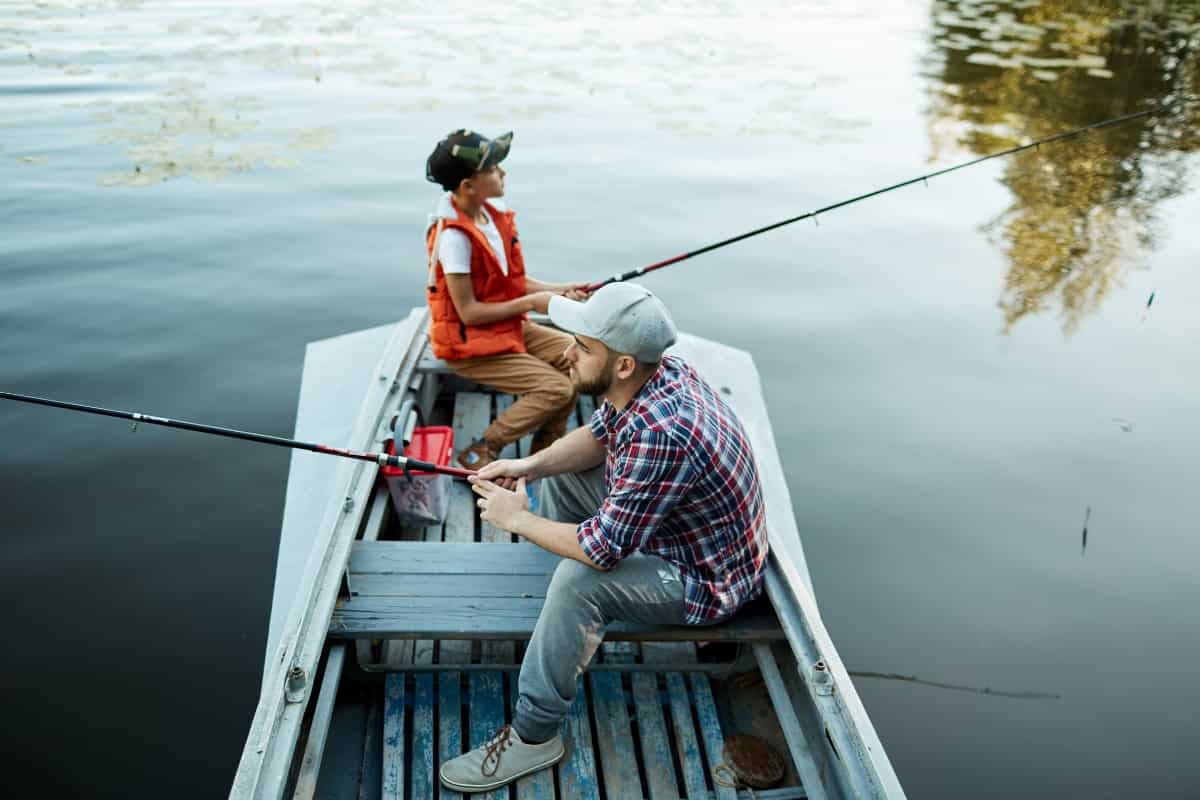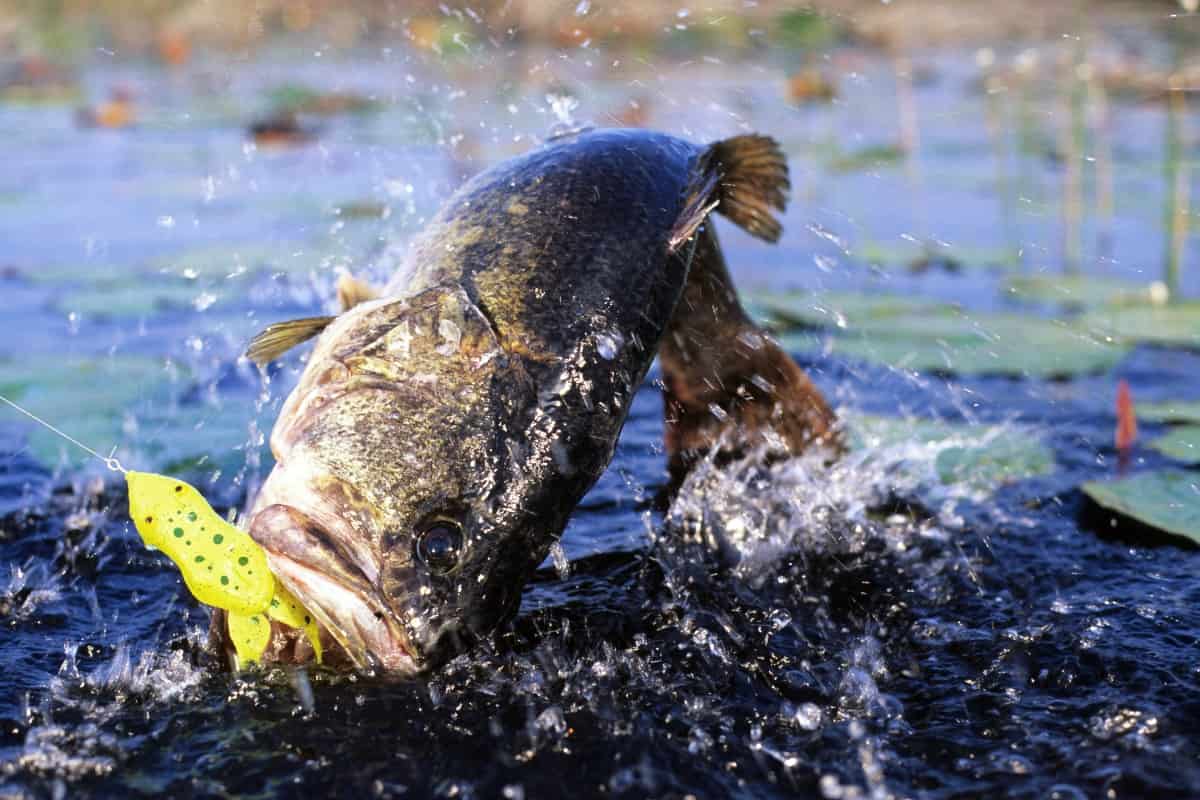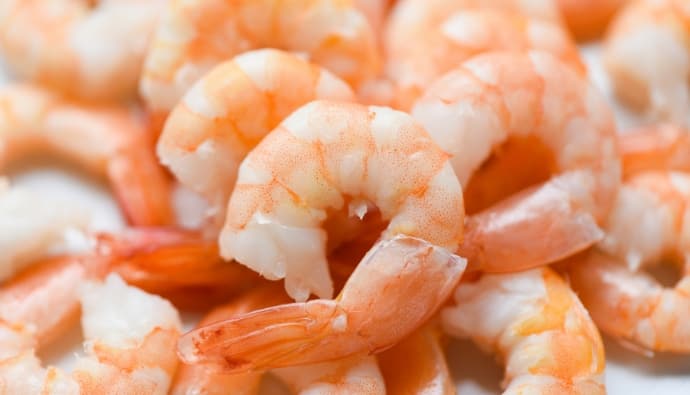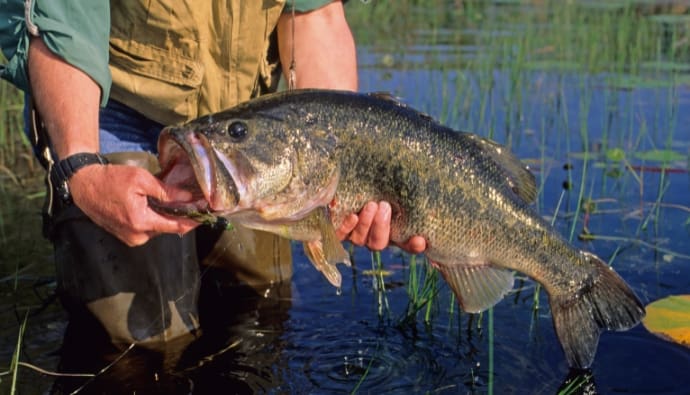Striped bass is a common sight in the east and west coast’s tidal zones. These fish are big and muscular. But don’t worry. They can still be caught easily with just a simple setup. You just need to know where to go, which bait to use, and patience.
This article will cover the definition of striped bass, their behaviors, where they are located, how to catch them, and some techniques. Furthermore, you’ll find here the best gear you can use when surf fishing for stripers.
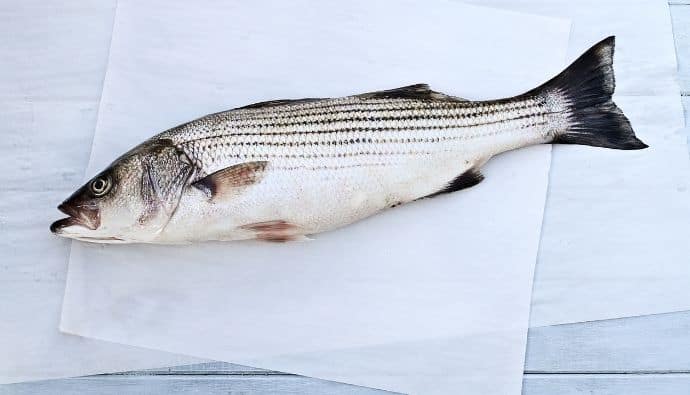
Here are some of our top recommended gears when fishing for striped bass:
Definition of Striped Bass
Striped bass is a huge predatory fish that spends much of its time basking in deeper water. It is very susceptible to water-quality problems, including algal blooms caused by nitrogen compounds in the water.
Furthermore, it is a freshwater, marine animal and ranges in size up to 30 inches and 30 pounds.
Listen to more surf fishing tips on the Cast & Spear Podcast
Beginner Steps for Surf Fishing for Stripers
The striped bass is a unique fish, and it’s one of the most sought-after fish in the world. It’s found in the Gulf of Mexico, off the coast of Florida, and along the East Coast as far as New York.
Here are some ways to catch striped bass:
1. Best Places for Striper Fishing
Striped bass is a very popular sport fish that has caught the attention of anglers and angling enthusiasts. The fish is widely available throughout the Atlantic, Pacific, and Gulf of Mexico. In some places, this fish is an important part of the food chain.
Familiarize Their Migratory Habits
The striped bass is migratory and can be found in habitats, including rivers in North Carolina, lakes, and reservoirs. Their presence in an area varies all year round.
During winter, they are found in deeper water off-shore. When it’s summer, they will migrate to the cooler areas on the north coast.
Catch Striped Bass on the Surf
If you are fishing for your first striped bass, you have to be aware of their habits, and pay attention to their usual time going in and out of present-day estuaries. They will return to their usual migration patterns in the fall.
They will feed along the beach during this time of year and then head deeper into the water. In the spring, the striped bass will feed in preparation for spawning.
The fact is, no matter what time of the year you fish for striped bass, you are going to catch them.
2. Install Different Types of Plugs into Your Water Column
Lures and plugs are the best choices for anglers who want a simple, easy-to-use lure that can be used on various baits. You won’t have to spend lots of money to surf fish for striped bass.
It is important to know what type of bait works best for different species. Let’s take a deeper look at plugs.
Pencil popper
The pencil popper is the best universal plug ever developed. It’s perfect for casting far inland or for covering an area of water quickly. A pencil plug can be used in the sea or freshwater.
The mechanism of a pencil popper is slow and random, making struggling striped bass on the surface an easy catch.
Swimming Plugs
Swimming plugs are easy to use and convenient, just like the usual bait. The striped bass is attracted to the vibration and will come towards it, making it one of the most potent, low-maintenance trolling baits ever.
Darts
Darts are another versatile lure for stripers and other species commonly found in the waters of Cape Cod and rocky shores.
They make fast, accurate strikes on the surface, which results in greater hook catches. It is also known for its durability and ease of releasing fish.
3. Lure Color Choice
Buying lures in primary colors such as white, black, and yellow would allow for a good yield of caught fish during nighttime. White is a common color for bait fish.
Black is a better choice than lighter colors because of its contrasting effect against the night sky. Yellow color can attract striped bass and catch them easily.
4. The Best Time to Fishing for Striped Bass
Striped bass is difficult to catch, and it’s important to know the time, weather, and tidal zones to catch them. They are most active after sunset when their color grows darker.
Stripers are usually found in shallow areas, where they are very active. The best time for fishing is after sunset when the sun is directly overhead.
If you find yourself on the sea during peak tide, prepare yourself to see a lot of striped bass feeding on the sediment, where bait can easily lure them. Stripers are the most abundant and varied fishes in the world’s oceans.
They become common during slack tide when the currents are the weakest. If you know where to look, live bait will bring in a large number of stripers.
Essential Gear for Striped Bass Surf Casting
If you want to take striped bass fishing seriously, you’ll need to have the right equipment. Whether you’re a starter or an expert, here are some of the best fishing accessories that will help in catching stripers.
1. Fishing Reel
The best reel that you can buy is the spinning reel. Your fishing goal should be to become a better angler and to improve your accuracy and casting ability. Go for water-resistant reels to keep your reel dry and protected from sea debris.
2. Fishing Rod
Choose rods extending from 7 to 11 feet. If you want to get better at fishing, you should try a longer rod. Rods longer than 15 feet are more likely to be heavy, difficult to control, and less effective in light currents.
Some rods made of graphite are good for targeting striped bass, muskies, and walleyes and will hold up well even in the harshest environments.
3. Tape Measure
A tape measure is a great device for measuring the distance of your catch, so you won’t need to worry about accidentally missing out on that huge striped bass that’s swimming away from you. You can also use it to measure your catch if it’s smaller than the state size requirements.
4. Sinkers
Sinkers increase your chances for better fishing success. The best fishing sinkers for bass are those that help you control your casting distance and improve your accuracy.
Slip Sinkers
Slip sinkers are used for bait fishing to stop the line from moving. Striped bass love to eat bait, such as live eels, worms, sand fleas, and more. They’re less effective than a fixed sinker, which is more effective when a fish takes the bait without moving it.
Fixed Sinkers
The number of fixed sinkers available in the market today is very limited, so anglers need to be familiar with their purpose. All fixed sinkers one common feature is they connect directly to a fishing line or leader by being pinched or tied.
5. Circle Hook
Circle hooks have a long curved point that is used in casting and flipping a striped fish. Your hook should be large enough to catch ones that are half an inch or more in length, as this is the only way to ensure you catch fish in good size.
6. Fish Finder Rig
This rig is a multiband line configuration that looks like a steel fishing reel. A fish finder rig is widely used in shark fishing due to its fast retrieve capability, consisting of a line suspended in the water with a set of fishing hooks attached to it. This way, the angler can easily find fish in trouble without much effort.
Conclusion
Catching striped bass doesn’t have to be difficult. It can be an enjoyable activity if you know their behaviors and areas where they are most numerous.
Most surf anglers prefer to surf fish for striped bass in the incoming tide. At this time, the water has better clarity and higher oxygen levels.
Hopefully, this article helped you with surf fishing for striped bass, don’t forget to use this as a guide when you find yourself out in the waters.




 Facebook
Facebook YouTube
YouTube
